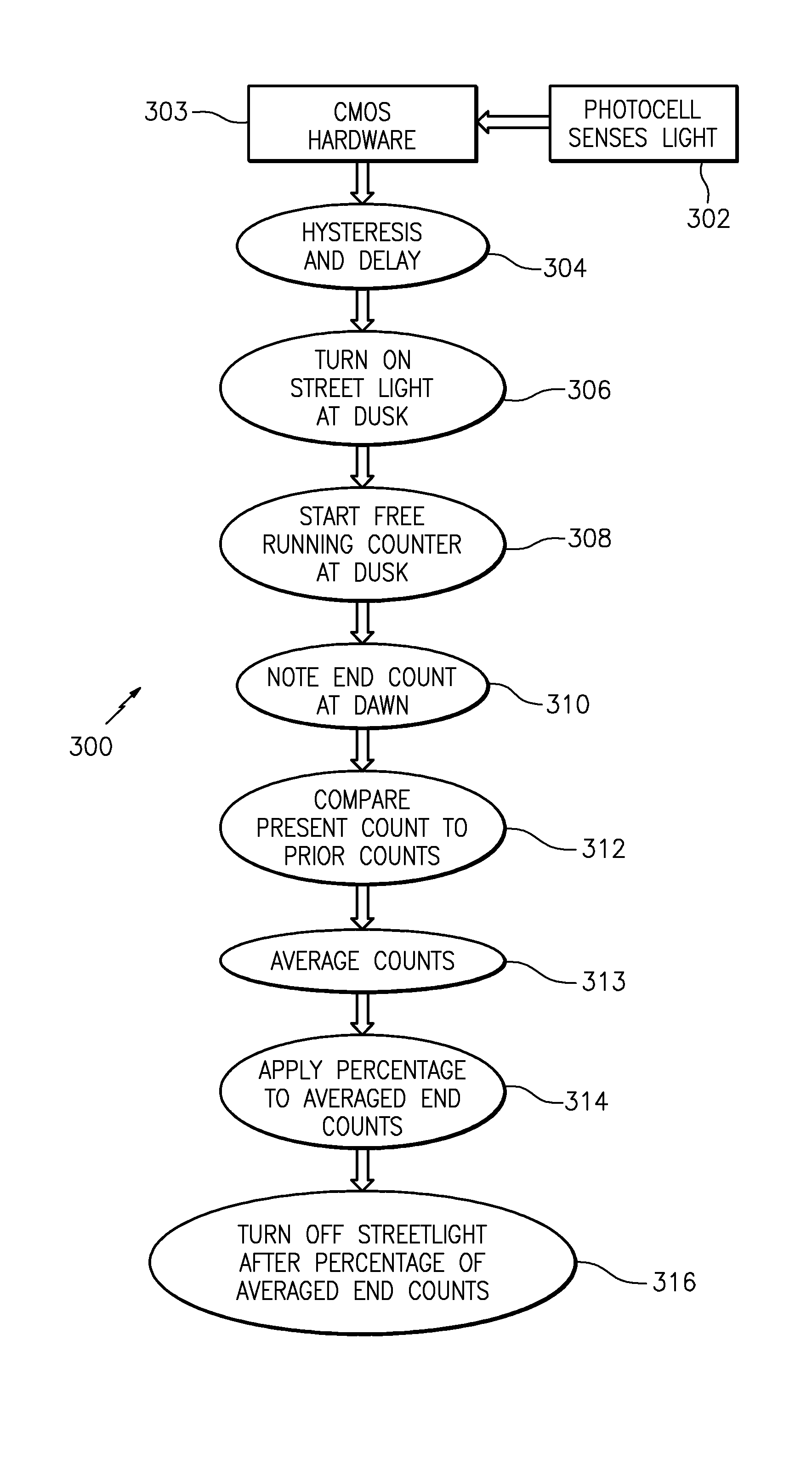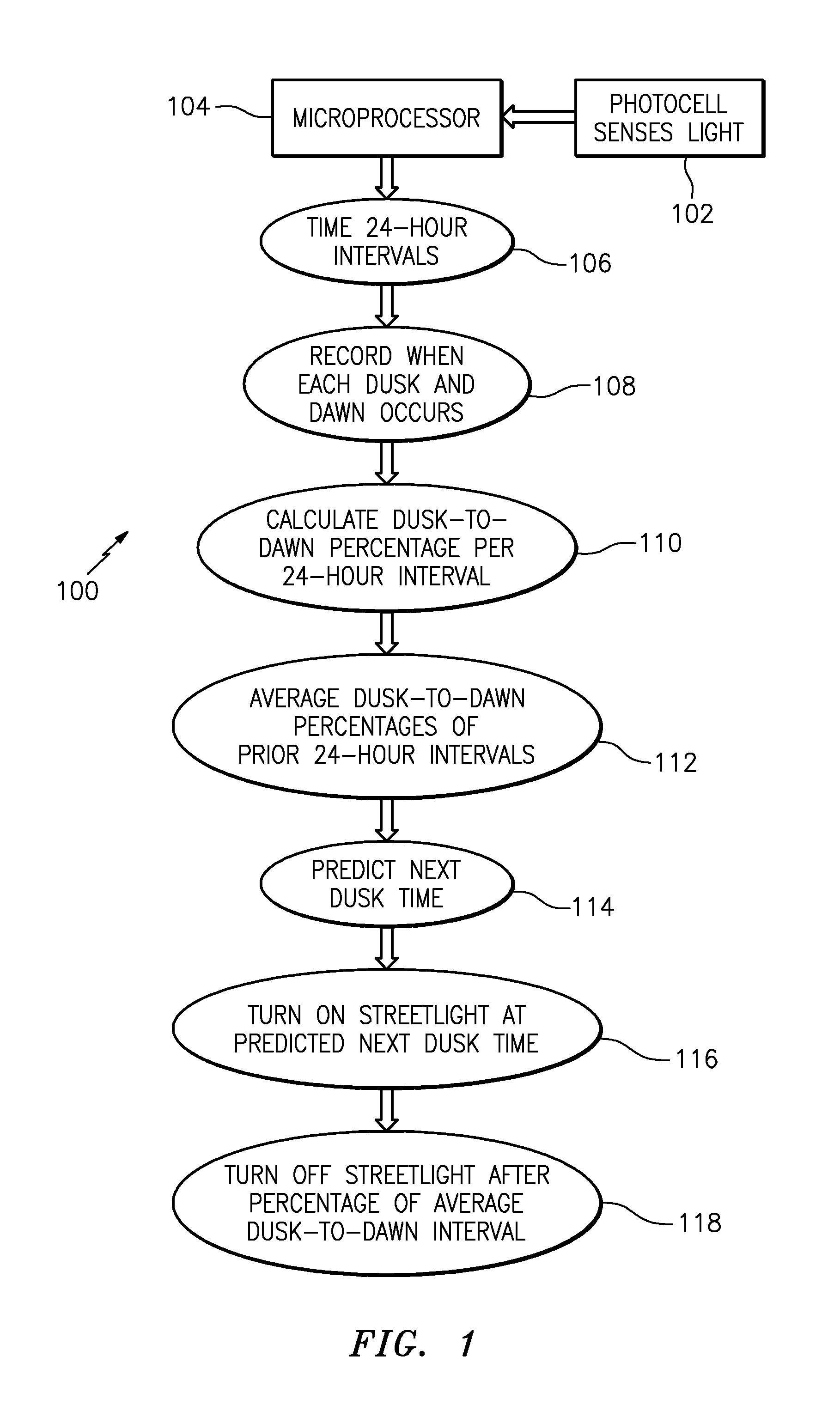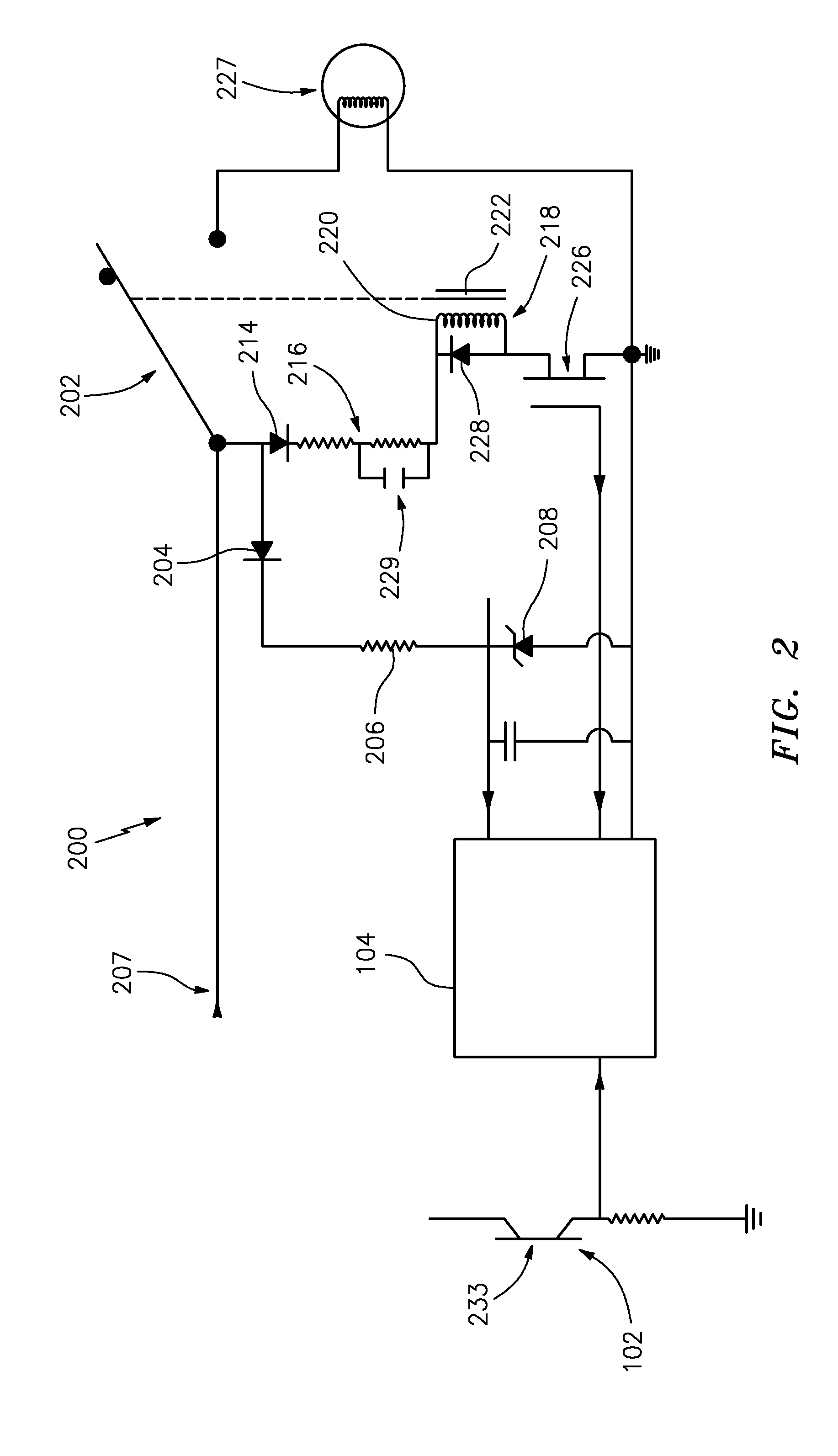Autonomous streetlight control
a streetlight and autonomous technology, applied in the field of streetlights, can solve the problems of unsatisfactory approaches, prevent the wide adoption of field programmable devices, and not cost effective or practical for individual streetlights
- Summary
- Abstract
- Description
- Claims
- Application Information
AI Technical Summary
Benefits of technology
Problems solved by technology
Method used
Image
Examples
Embodiment Construction
)
[0021]Applicant has disclosed alternative methods 100, 300 (see FIGS. 1, 3) for automatically synchronizing the on and off time for streetlights by sensing and analyzing local conditions without human intervention. Applicant's approach is to: sense and record when dusks and dawns occur; average the dusk-to-dawn intervals for a plurality of preceding days; and, upon sensing the next dusk, turning on the streetlight only for a desired percentage of the calculated average intervals.
[0022]Applicant has quoted the following excerpts from Wikipedia's (Wikipedia.com) definitions of “SUNSET” and “SUNRISE” to clarify the differences between sundown (a.k.a. sunset) and dusk and sunup (a.k.a. sunrise) and dawn:[0023]. . . The time of sunset is defined in astronomy as the moment the trailing edge of the Sun's disk disappears below the horizon in the west. The ray path of light from the setting Sun is highly distorted near the horizon because of atmospheric refraction, making astronomical sunse...
PUM
 Login to View More
Login to View More Abstract
Description
Claims
Application Information
 Login to View More
Login to View More - R&D
- Intellectual Property
- Life Sciences
- Materials
- Tech Scout
- Unparalleled Data Quality
- Higher Quality Content
- 60% Fewer Hallucinations
Browse by: Latest US Patents, China's latest patents, Technical Efficacy Thesaurus, Application Domain, Technology Topic, Popular Technical Reports.
© 2025 PatSnap. All rights reserved.Legal|Privacy policy|Modern Slavery Act Transparency Statement|Sitemap|About US| Contact US: help@patsnap.com



